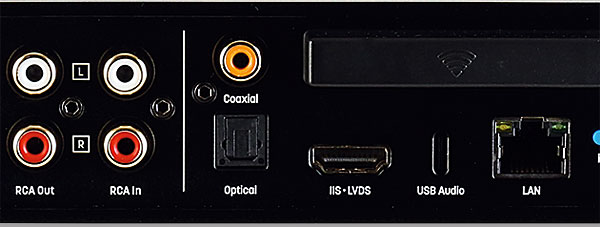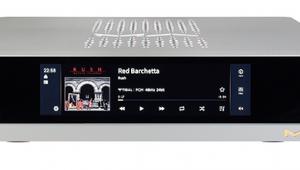Matrix Audio mini-i Pro 3 Network-Attached DAC

 Pitched at the very affordable end of MA's comprehensive DAC/headphone series, the network-attached mini-i Pro 3 supports a huge range of formats with a powerful punch
Pitched at the very affordable end of MA's comprehensive DAC/headphone series, the network-attached mini-i Pro 3 supports a huge range of formats with a powerful punch
The exact definition of what constitutes a DAC has become a little blurry in recent years. Where once the outboard 'Digital-to-Analogue Converter' offered S/PDIF and possibly USB digital inputs together with fixed and/or variable outputs on RCAs and/or XLRs, the latest generation has undergone a fair bit of mission creep. Some of this is undoubtedly in response to the wealth of new digital sources but it also speaks to the relaxing of the principles of hair-shirt minimalism that audio has worked to over many years.
Even allowing for today's augmentation of DAC functionality, the mini-i Pro 3 is still impressively specified. The more sophisticated version of the entry level product from Matrix Audio (there is a non 'Pro' version too), its connectivity is supremely comprehensive, kicking off with optical, coaxial and USB inputs, the latter on a micro USB-C connection. More unusually, there's also an I2S connection via an HDMI socket. Format handling is comfortably state-of-the-art, with PCM supported to 768kHz/32-bit (inc. MQA) and DSD to 512 on the USB input.
Cerebral Cortex
But we are only getting started as the mini-i Pro 3 is also fitted with wired and wireless Ethernet connections, allowing it to be controlled as a Roon Endpoint and be streamed to via AirPlay. There is no default UPnP access or control app but, with Roon now available on a monthly sub, this is not the cost limitation it might once have been. There's also Bluetooth connectivity, with every codec I'm aware of supported bar the Huawei-specific HWA. Then, as if to tax the definition of a DAC still further, there is a single RCA line input too.

This functionality is made available to four different outputs, including RCAs and XLRs that can be set to function at line level or as a preamp output. Volume can be controlled via a front panel knob, with the supplied remote handset or when used via Roon. This is joined by standard 6.35mm and 4.4mm 'Pentaconn' headphone sockets on the front panel, ensuring that balanced operation is available in either listening condition. What results is an extremely well specified device for your £900.
With an NXP I.MX 6UL Cortex-A7 processor as its beating heart, the digital hardware inside the mini-i Pro 3 is as comprehensive as the feature set itself. Moreover, Matrix Audio has boosted the performance of the ESS9038Q2M DAC in this 'Pro' version with a Crystek CCHD-950 clock, squeezing jitter down to vanishingly low levels. The main processor, meanwhile, boasts more than enough headroom, and the code slickly written, to ensure the mini-i Pro 3 is responsive and stable when you set about navigating its considerable functionality.
Fit For Purpose
Across the different phases of testing and with it under use for several months, this DAC never felt laggy or unstable at any point – an issue that can bedevil technically ambitious devices such as this.
All this capability comes wrapped in half-width casework, predominantly made from metal and finished to the sort of standard that's par for the price. The single finish option sees a dark grey fascia fronting a black chassis, so if you have a system that's entirely black or silver, you might find this halfway house a less than ideal aesthetic match. Otherwise, it's a great fit for tight rack spaces!

The decision not to use a wall wart or external block-type PSU is a welcome one as it makes for a neater installation just as, given how much connectivity is offered, the well-organised back panel will easily accommodate a lot of different digital and analogue interconnects. The relatively small size of the display and the sheer amount of functionality on offer means initial setup can be a little fiddly but, once configured, the mini-i Pro 3 is not a difficult device to use across multiple roles.
![]() Karma Chameleon
Karma Chameleon
For much of my listening with the mini-i Pro 3 it was pressed into service as a USB and network-attached DAC, the XLR outs set to line-level feeding a Chord Electronics CPM 2800 MkII integrated amplifier and Kudos Titan 505 standmounts. I felt that 'digital Filter 3' (Linear Phase/Fast) gave the best results by a tiny margin but none of the available options had a drastic impact on my impressions of this busy little device. And this is no bad thing because the mini-i Pro 3 offers up a deeply impressive sound.


















































